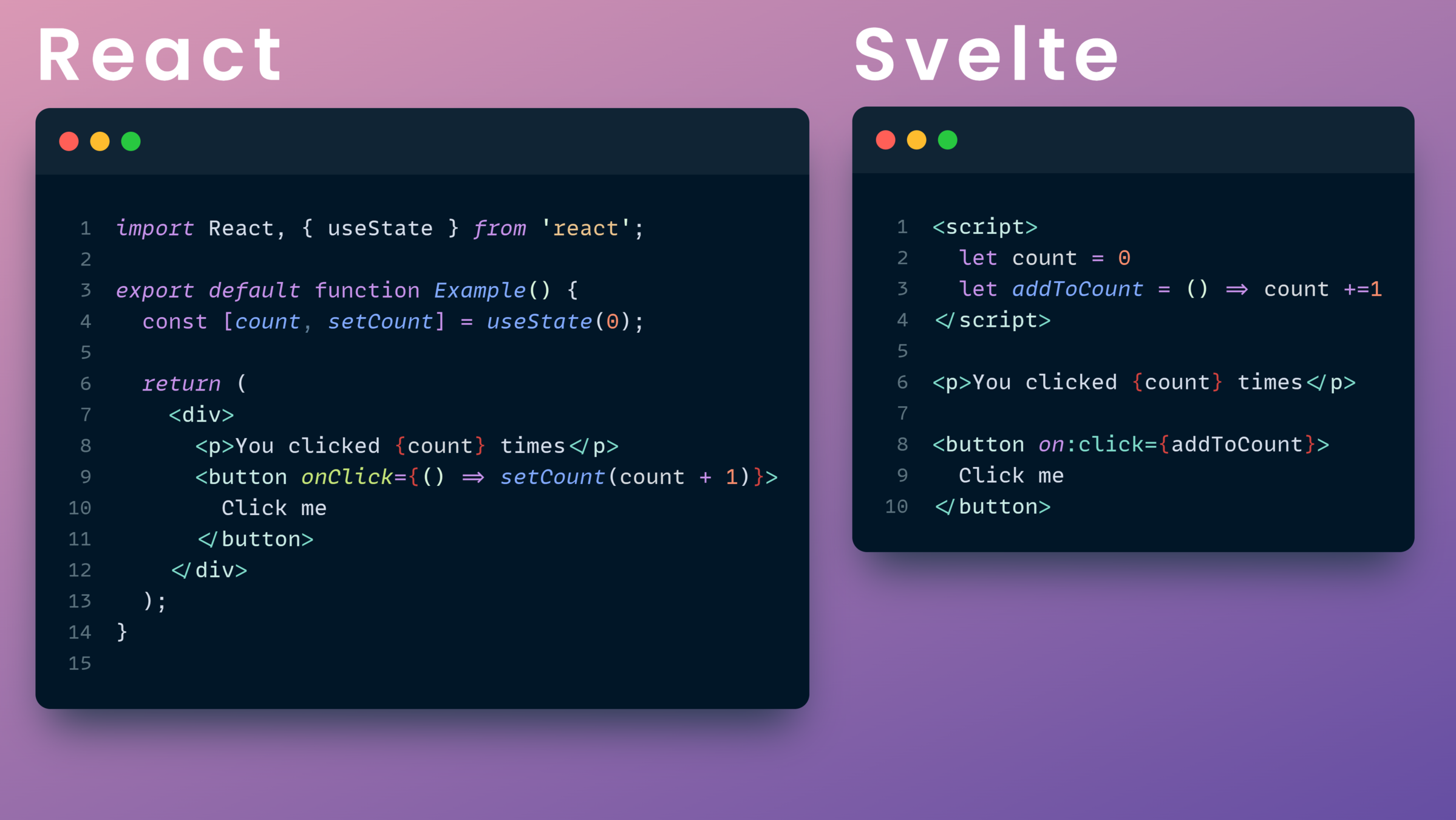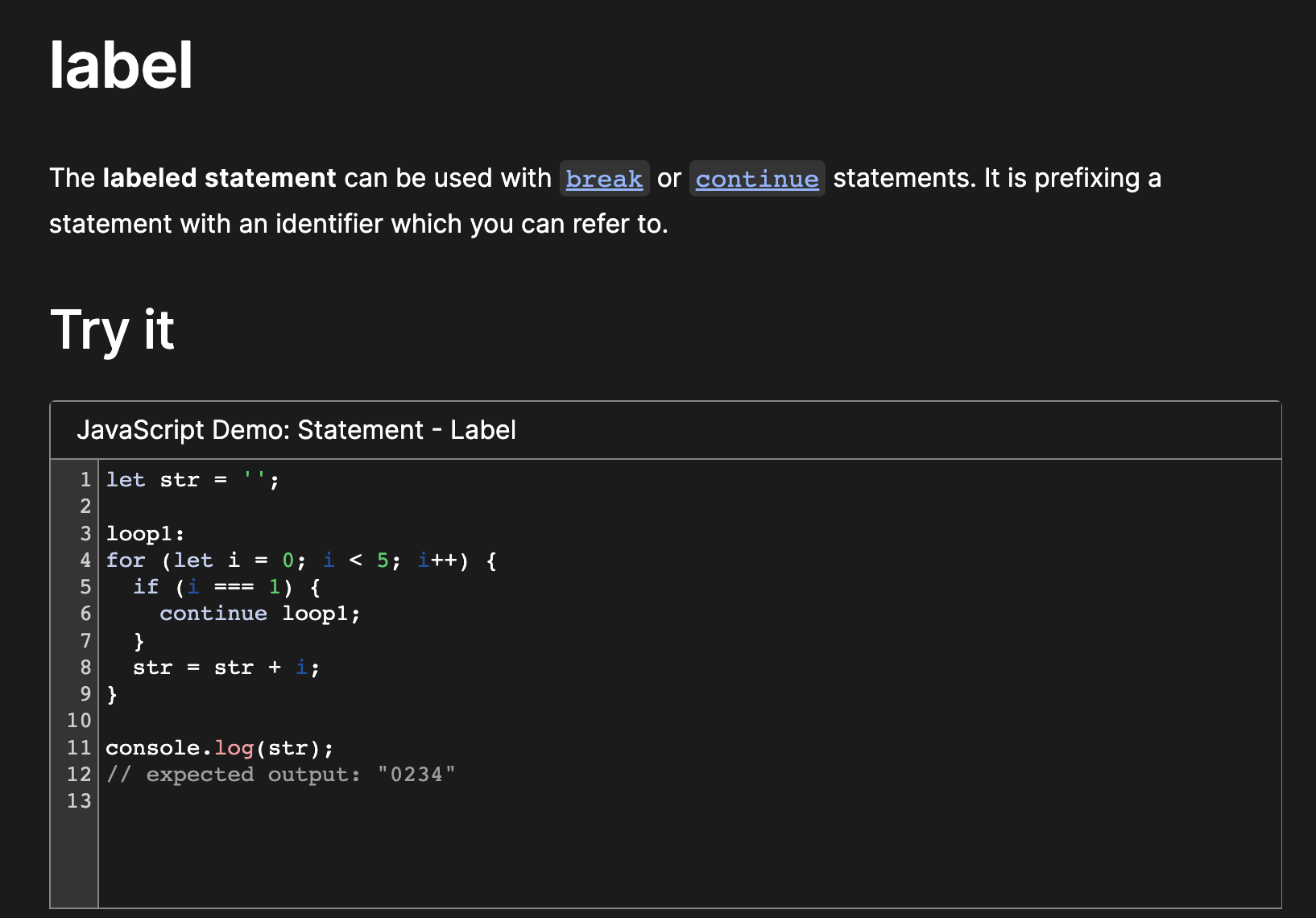Load Up on SvelteKit
Async September 2023
Understanding the Magic Behind Data Loading
Scott Spence
- Svelte LDN meetup organiser
- Working with Svelte workshops
- Application Team Lead
- Dad 👨👩👧
- Cat dad 😺






Svelte London
September - ?

Understanding the Magic Behind Data Loading
In SvelteKit
What is Svelte?
What is Svelte?
- Component Framework
- No virtual DOM
- It's a compiler
- v1 released in late 2016
What's a framework?
- Declarative code
Declarative
vs
Imperative
Imperative
function component() {
let count = 0;
const button = document.createElement('button');
button.textContent = `Clicks: ${count}`;
button.addEventListener('click', () => {
count += 1;
button.textContent = `Clicks: ${count}`;
});
return button;
}Declarative
<script>
let count = 0;
</script>
<button on:click={() => count += 1}>
Clicks: {count}
</button>import React, { useState } from 'react';
export default function Component() {
const [count, setCount] = useState(0);
return <button onClick={() => setCount(count + 1)}>
Clicks {count}
</button>;
}import React, { useState } from 'react';
export default function Example() {
const [count, setCount] = useState(0);
return <button onClick={() => setCount(count + 1)}>Clicks {count}</button>;
}<script>
let count = 0;
</script>
<button on:click={() => count += 1}>Clicks: {count}</button>
Understanding the Magic Behind Data Loading
Svelte Basics
Svelte Basics
- It's a HTML superset
- Styling
- Reactivity
- Component props
- Logic
HTML superset
<h1>Hello world!</h1><script>
</script>
<h1>Hello world!</h1>
<style>
</style>Styling
<p>This is a paragraph.</p>
<style>
p {
color: purple;
font-family: 'Comic Sans MS', cursive;
font-size: 2em;
}
</style>
Styling
<p
class="text-purple-500 font-['comic_sans_ms'] text-3xl"
>
This is a paragraph.
</p>
Reactivity
<script>
let count = 0;
$: doubled = count * 2;
function handleClick() {
count += 1;
}
</script>
<button on:click={handleClick}>
Clicked {count} {count === 1 ? 'time' : 'times'}
</button>
<p>{count} doubled is {doubled}</p>What the flip?
$:
Gotchas?
Gotchas?
Mutation
<script>
let numbers = [1, 2, 3, 4];
function addNumber() {
numbers.push(numbers.length + 1);
}
$: sum = numbers.reduce((t, n) => t + n, 0);
</script>
<p>{numbers.join(' + ')} = {sum}</p>
<button on:click={addNumber}>
Add a number
</button>Assignment
<script>
let numbers = [1, 2, 3, 4];
function addNumber() {
numbers = [...numbers, numbers.length + 1];
}
$: sum = numbers.reduce((t, n) => t + n, 0);
</script>
<p>{numbers.join(' + ')} = {sum}</p>
<button on:click={addNumber}>
Add a number
</button>Logic
- #if - #else - #each- #awaitLogic blocks
#/:opening tag
closing tag
continuation tag
#if{#if expression}
<!-- do stuff -->
{/if}<script>
let user = { loggedIn: false };
function toggle() {
user.loggedIn = !user.loggedIn;
}
</script>
{#if user.loggedIn}
<button on:click={toggle}>
Log out
</button>
{/if}
{#if !user.loggedIn}
<button on:click={toggle}>
Log in
</button>
{/if}#if<script>
let user = { loggedIn: false };
function toggle() {
user.loggedIn = !user.loggedIn;
}
</script>
<button on:click={toggle}>
Log out
</button>
<button on:click={toggle}>
Log in
</button><script>
let user = { loggedIn: false };
function toggle() {
user.loggedIn = !user.loggedIn;
}
</script>
{#if user.loggedIn}
<button on:click={toggle}>
Log out
</button>
{/if}
{#if !user.loggedIn}
<button on:click={toggle}>
Log in
</button>
{/if}#else{#if expression}
<!-- do stuff -->
{:else}
<!-- do else stuff -->
{/if}<script>
let user = { loggedIn: false };
function toggle() {
user.loggedIn = !user.loggedIn;
}
</script>
{#if user.loggedIn}
<button on:click={toggle}>
Log out
</button>
{:else}
<button on:click={toggle}>
Log in
</button>
{/if}#else<script>
let user = { loggedIn: false };
function toggle() {
user.loggedIn = !user.loggedIn;
}
</script>
{#if user.loggedIn}
<button on:click={toggle}>
Log out
</button>
{/if}
{#if !user.loggedIn}
<button on:click={toggle}>
Log in
</button>
{/if}<script>
let user = { loggedIn: false };
function toggle() {
user.loggedIn = !user.loggedIn;
}
</script>
{#if user.loggedIn}
<button on:click={toggle}>
Log out
</button>
{:else}
<button on:click={toggle}>
Log in
</button>
{/if}#each<script>
let xers = [
{handle: 'Rich_Harris', name: 'Rich Harris'},
{handle: 'dummdidumm', name: 'Simon H'},
{handle: 'trueadm', name: 'Dominic Gannaway'},
]
</script>
<ul>
{#each xers as xer, i}
<li>
<a target="_blank" href="https://x.com/{xer.handle}">
{i+1}: {xer.name}
</a>
</li>
{/each}
</ul>#await<script>
async function getRandomNumber() {
const res = await fetch(`/tutorial/random-number`);
const text = await res.text();
if (res.ok) {
return text;
} else {
throw new Error(text);
}
}
let promise = getRandomNumber();
</script>
<button on:click={() => (promise = getRandomNumber())}>
generate random number
</button>
{#await promise}
<p>...waiting</p>
{:then number}
<p>The number is {number}</p>
{:catch error}
<p style="color: red">{error.message}</p>
{/await}
What is SvelteKit?
What is SvelteKit?
- Powerful router
- SSR and CSR support
- Page pre-loading
- HMR thanks to Vite
SvelteKit is to Svelte as NextJS is to React and Nuxt is to Vue
SvelteKit
meta-framework


➡️➡️



➡️➡️
➡️➡️
Understanding the Magic Behind Data Loading
The Curse of Knowledge

Routing
in SvelteKit
SvelteKit Routing
├── src
│ ├── routes
│ │ └── index.svelte
│ ├── app.css
│ └── app.html├── src
│ ├── routes
│ │ ├── about.svelte
│ │ └── index.svelte
│ ├── app.css
│ ├── app.d.ts
│ └── app.htmlFile Notation
├── src
│ ├── routes
│ │ └── +page.svelte
│ ├── app.css
│ └── app.html├── src
│ ├── routes
│ │ ├── about
│ │ │ └── +page.svelte
│ │ └── +page.svelte
│ ├── app.css
│ ├── app.d.ts
│ └── app.html├── src
│ ├── routes
│ │ ├── about
│ │ │ ├── +page.svelte
│ │ │ └── +page.ts
│ │ └── +page.svelte
│ ├── app.css
│ ├── app.d.ts
│ └── app.html+page.svelte
+page.ts
+page.server.ts
+layout.svelte
+layout.ts
+layout.server.ts
+error.svelte
+server.ts
<script lang="ts">
export let name = 'World'
</script>
<p>Hello, {name}!</p>Component props
src/lib/components/greeting.svelte<script lang="ts">
import Greeting from '$lib/components/greeting.svelte'
</script>
<Greeting name="Svelte" />Component props
src/routes/greet/+page.svelteexport const load = () => {
return {
title: 'This data is from the load function',
}
}src/routes/about/+page.ts<script lang="ts">
export let data
</script>
<h1>This is the about page</h1>
<pre>{JSON.stringify(data, null, 2)}</pre>src/routes/about/+page.svelte{
"title": "This data is from the load function"
}src/routes/about/+page.svelte (output)<script lang="ts">
export let data
</script>
<h1>This is the about page</h1>
<p>{data.title}</p>src/routes/about/+page.svelteThis data is from the load functionsrc/routes/about/+page.svelte (output)